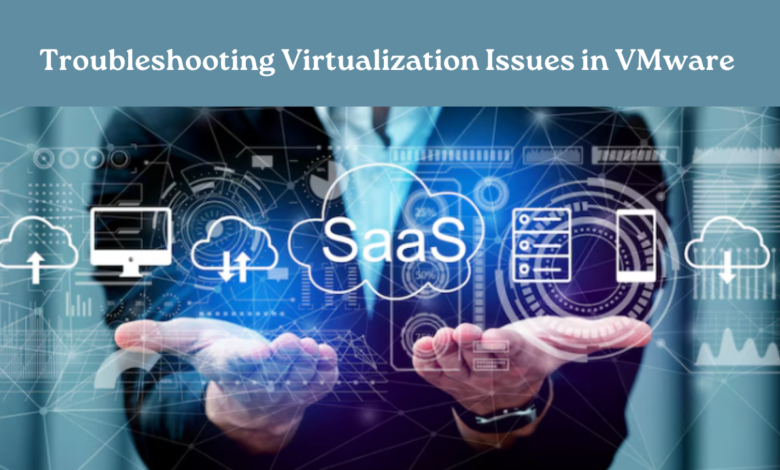Troubleshooting Virtualization Issues in VMware: A Comprehensive Guide

Virtualization technology has drastically changed the IT domain, allowing for optimal resource usage, scalability, and flexibility when deploying applications and services. VMware, a leader in virtualization solutions, offers robust platforms like VMware ESXi and VMware vSphere that power countless virtualized environments globally. However, like any complex technology, virtualization can encounter issues that require prompt diagnosis and resolution. In this guide, we will delve into troubleshooting common virtualization problems in VMware environments.
1. Understanding Common Issues
Before diving into troubleshooting, it’s crucial to grasp the common challenges faced in VMware virtualization environments:
i) Performance Degradation:
Sluggish VM performance could stem from resource contention, misconfigured settings, or storage bottlenecks.
ii) Networking Problems:
Connectivity issues, VLAN misconfiguration, or improper network setup can affect VM communication.
iii) Storage Concerns:
Disk latency, storage misconfiguration, or inadequate storage space can impact VM operations.
iv) VM Deployment Failures:
Errors during VM creation or migration can occur due to compatibility issues or resource constraints.
v) Host Connectivity Issues:
Problems with the ESXi host, such as hardware failures or outdated firmware, can disrupt VM operations.
2. Comprehensive Troubleshooting Guide
Step 1: Identify the Problem
Start by gathering information about the issue:
i) Review Logs:
Examine VMware logs (located in /var/log) for error messages or warnings.
ii) Monitor Performance:
Utilize VMware vCenter Server to analyze resource usage (CPU, memory, disk, network) across hosts and VMs.
iii) Check Configuration:
Verify network, storage, and VM settings for inconsistencies.
Step 2: Isolate the Scope:
Ascertain if the problem is confined to a particular virtual machine, host, datastore, or network.
i) Test Connectivity:
Ping VMs from other hosts to diagnose network-related problems.
ii) Storage Testing:
Check datastore accessibility and performance using VMware tools.
Step 3: Apply Common Fixes
Address typical issues with these solutions:
i) Resource Allocation:
Adjust CPU and memory settings for VMs based on workload requirements.
ii) Networking Configuration:
Ensure correct VLAN settings and network adapter configurations.
iii) Storage Optimization:
Implement storage vMotion to balance datastores or troubleshoot disk latency.
Step 4: Utilize VMware Tools
VMware provides diagnostic tools for in-depth troubleshooting:
i) vSphere Web Client:
Use the interface to monitor and manage VMs, hosts, and clusters.
ii) ESXi Shell:
Access the command-line interface for advanced troubleshooting and system management.
iii) vRealize Operations Manager:
Leverage advanced analytics for proactive monitoring and issue detection.
Step 5: Engage VMware Support
For complex issues or unresolvable problems, VMware Support can provide expert assistance:
i) Collect Logs:
Generate and share log bundles with VMware Support for analysis.
ii) Open a Support Ticket:
Provide detailed information about the problem, environment, and troubleshooting steps taken.
3. Best Practices for Prevention
To minimize virtualization issues:
i) Regular Updates:
Keep VMware software up to date with the latest patches and updates.
ii) Backup Strategy:
Implement a robust backup and recovery plan to mitigate data loss.
iii) Capacity Planning:
Monitor resource usage trends to forecast and accommodate future demands.
Conclusion
Troubleshooting virtualization issues in VMware requires a systematic approach combining diagnostic tools, log analysis, and best practices. By understanding common challenges and following structured troubleshooting steps, IT professionals can efficiently resolve issues and ensure optimal performance of VMware virtualized environments. Remember, continuous learning and proactive maintenance are key to successful virtualization management.
In summary, with the right tools, knowledge, and approach, VMware virtualization issues can be effectively identified, diagnosed, and resolved, ensuring reliable and efficient operation of your virtual infrastructure.
If you need more comprehensive guides on troubleshooting errors, explore www.intogeeks.com.




